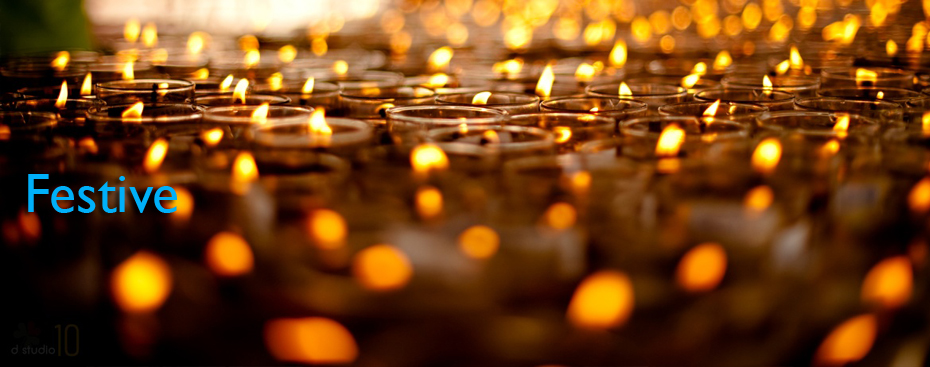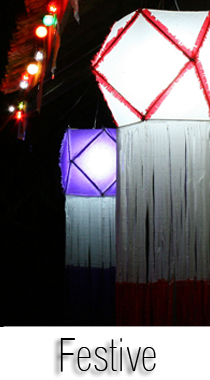Sri Lanka is a land of celebration. The many ethnicities and the pervasive acceptance of each other's traditions and religion mean that Sri Lanka is a land of continual festivities.
From magnificent pereheras (processions) to religious ceremonies, cultural festivities and harvest festivals, the list of things to see and do is endless.
Sinhala Hindu New Year
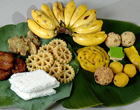
- History of Sri Lanka's Sinhala & Tamil New Year
The celebration of Sinhala & Tamil New Year was motivated by various religious influences in Sri Lanka, namely Buddhist and Hindu. However, it is believed that the celebration of New Year has existed long before the religions came into the scene. These religions have somehow penetrated the core of Sri Lankan culture and associated their rituals to thanksgiving after harvesting agricultural produce. However, most of the mythological background of the festival has touch of Hindu religion. Sri Lankan's also connect the date and timing of the festivity during the mating season of a bird endemic in the region – Asian Koel. The signature "koo-ooo" call of the male Koel bird dominates the tree-saturated portion of the country signaling the bird's looking for a mate.
Sri Lanka's Sinhala & Tamil New Year: Traditions, Customs and Activities
The celebration of Sinhala & Tamil New Year may officially lasts for seven days but still depends on the family's social and economic status. People, young and old, take part in religious celebrations as a thanksgiving for a year of bountiful harvest. This celebration is a time when people wear their best or newly bought dress for the new year. Traditional Sri Lankan food is served which are shared by family members and the visiting relatives. Coconut-based sweets and delicacies are also popular during the holiday. A great number of Sri Lankan families in major cities and towns across the country usually stay in hotels and rather eat in restaurants to celebrate the new year. One tradition that is linked to Sinhala & Tamil New Year is the parents' anointing of oils to their children a symbol for blessing their children for a plentiful and abundant new year ahead. Fireworks abound and lit up the sky at night.
Wesak
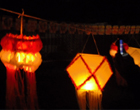
- Thousands of terracotta oil lamps flicker with golden light, like broken fragments of the full moon gleaming overhead. The faint fragrance of burning coconut oil mingles with the elusive perfumes of a tropical night. And the soft chants of worshippers, dressed in white to denote purity, give the scene a surreal beauty as Sri Lanka's Buddhists celebrate the holiest day of the year, Vesak. Vesak Day falls during the full moon every May. It commemorates the "thrice blessed day" celebrating the birth, enlightenment and passing away of the Lord Buddha. But Sri Lanka has its own unique interpretation of Vesak - mingling devotion and alms-giving with spectacular displays of light. Vesak lantern-making is a tradition still followed in rural areas with the whole family getting together to create these delicate lamps from split bamboo frames and tissue paper. Uniquely Sri Lankan in style, these often comprise a huge central lantern from which many tiny lanterns are suspended. Huge bamboo-framed paintings, pandals, pulsating with coloured lights, are dramatic displays retelling the stories of Buddha's life. During Vesak, free food is offered to all-comers of all religious denominations. Communities countrywide gather contributions from local residents, regardless of religion, with Christians, Hindus and Muslims all happily contributing. Each community group — whether market-sellers, a temple or suburb — selects a leader to supervise the collection and distribution of alms during the Vesak period. Temporary stalls or dhanselas where food and drink are given out operate well into the early hours of the morning. With the spirit of generosity so typical of this festival, even foreign visitors who happen to pass by the dhanselas are urged to eat and drink.
Poson
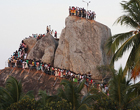
- Of great Buddhist significance, but unique to Sri Lanka, is the Poson pilgrimage during the full moon in June. The festivals history dates back to 247 BC when Sri Lankan King Devanampiyatissa was on a hunting expedition on the Mihintale mountain. In pursuit of a stag, he found himself lured to the mountain peak where he beheld a serene, dignified figure in saffron robes who beckoned to him. This was Mahinda, son of the Indian Emperor Asoka and Sri Lanka's first Buddhist missionary. He preached the Buddha's teachings of Peace and Compassion to the king, triggering a dramatic conversion to Buddhism of the monarch and 40,000 of his men. The inception of the Buddhist faith in the island is commemorated annually, as it has been for over two thousand years. Each year, streams of pilgrims in pristine white ascend to the summit of the forest-covered Mihinthale, offering fragrant frangipani and lotus blossoms to the dagoba built by King Devanampiyatissa. They walk in slow reverential columns to where Mahinda meditated, seated on a bed of stone, in a primitive rock cave perched at the steeply dropping peak.
Sri Pada
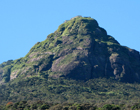
- The Sri Pada pilgrimage is a seasonal event that takes place between the months of December to May each year, where thousands flock to pay homage to sacred footprint atop the Adam's Peak. Few mountains the world over might have attracted as many pilgrims as this one which soars 7000 feet above sea level and is situated off Ratnapura, the city of gems.
The pilgrimage converges the nation's four religious faiths. The sacred footprint is, according to the Buddhists, that of Buddha who visited the peak at the invitation of its guardian deity. To the Hindus it is that of Shiva, the great Hindu God of Destruction. To the Christians it is that of St. Thomas, whilst to the Muslims it is that of Adam who, post-expulsion from the Garden of Eden, took refuge on this mountain.
The Sri Pada pilgrims follow a number of traditions customs. At a certain point during the climb, pilgrims pause en route to throw a threaded needle into the bushes, commemorating the legend that Lord Buddha paused to mend a tear in his robe during his climb. When crossing the Seetha Gangula, a stream about half-way to the summit, pilgrims cleanse themselves with the icy water, which helps refresh them for the final climb. It would be considered crass and certainly lacking in religious devotion to ask how much longer it will take to reach the summit. Instead, passers-by exchange the greeting "Karunavai" or Peace. Many devotees recite religious poems as they climb to help them on their arduous journey.
Shortly before the summit, where the steps become an almost vertical stairway, during the height of the season, pilgrims may have to wait in line for as long as half an hour before proceeding to the small platform on top. After completing their worship, pilgrims ring a bell, once for every visit. It is not unusual to hear the bell rung a dozen times or more by devout pilgrims who have made repeated voyages to the holy site.
Kandy Esala Perahera
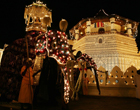
-
The Kandy Esala Perahera, one of Sri Lanka's most famous religious festivals, takes place every year in the hill-capital Kandy, in the full-moon month of Esala coinciding with July/August.
Held to seek blessings for a good harvest from the deities, ten days of increasingly frenetic activity culminate in an ancient, awe-inspiring procession that for centuries has drawn religious devotees, and more recently tourists, to Kandy's narrow hill-streets.
Heralded by thousands of Kandyan drummers, a host of majestic elephants, adorned in elaborately embroidered cloaks, are led by the brilliantly caparisoned Maligawa Tusker. Decorated from trunk to toe, he carries a huge canopy that shelters, a replica of the cask containing the Sacred Tooth Relic of the Lord Buddha.
The Esala Perahera actually comprises of five separate Peraheras - four from the Kandy devales (shrines) to the deities – with order of precedence maintained throughout. Led by the Dalada Maligawa Perahera, the second is to Natha, a deity of special importance to Kandy, believed to be Buddha-in-waiting. The third is to Sri Lanka's Guardian Vishnu, also one of the three great Hindu gods and an important figure in representing the crossover between Hindu and Buddhist beliefs. Fourth and fifth peraheras are from the shrines to god of war and victory Katharagama, and goddess of chastity Pattini.
Kataragama Perahera
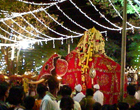
- The Kataragama Perehera is held in the months of July/August and is a festival that coincides with the new Moon in the Esala month. This two-week Perahera attracts thousands - Hindus and Buddhists -, many of who make the pilgrimage on foot from as far afield as Jaffna in Sri Lanka's northern peninsula.
Katharagama's main temple of the Maha Devala is dedicated to the Hindu God of War, Skanda. Said to have six heads, twelve arms, twenty names and-two wives, Skanda is also ardently worshipped by Buddhists as the Katharagama Deviyo. Alongside are shrines dedicated to the deities Ganesha, Vishnu, to the goddesses Kali and Pattini and to Katharagama's two consorts Valli Amman and Thevani Amman.
According to legend, Skanda arrived in Sri Lanka and liked the gifts bestowed by the Sinhalese - a house of leaves and a beautiful consort. And it is the romantic union of Skanda and Valli Matha that is commemorated annually. Every night of the festival, a procession takes place in which the yantra talisman is borne in a casket to the temple of Valli Matha and left briefly in its inner chamber.
But on the final night, it is left till dawn symbolising the consummation of the couple's love. And the pageantry increases in grandeur as the festival reaches its climax, with a parade of brilliantly caparisoned elephants and a procession replete with dancers, drummers, torchbearers, devil-dancers, stilt-walkers, whip-crackers, flame-dancers, incense-bearers and elephant keepers.
Deepavali
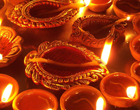
- Deepawali or Diwali is a festival of lights symbolising the victory of righteousness and the lifting of spiritual darkness. The word `Deepawali' literally means rows of clay lamps.
More Beaches
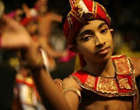
- .

